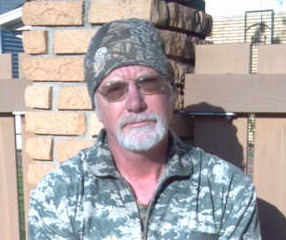
I’ve seen several articles lately both in print and on the TV evening news reminding Kansans that it’s snake season.
It reminded me of a small story years ago on the back page of the Hutchinson News entitled “Rattlesnake Relocation Project comes to an End.” It seems that in the spring of 2007, Lenexa, Kansas residents began spotting an ever-increasing number of rattlesnakes in some neighborhoods.
While checking on the construction site for a never-built Target store, the city construction inspector discovered numerous rattlesnakes lying around the site. It was determined that a large rattlesnake den existed somewhere under a big pile of construction rubble there. A biology professor at a major out-of-state university, saw it as the perfect opportunity to test a new conservation model; the attempted relocation of as many snakes as possible from a single population in hopes they would establish their same population somewhere else. Around-the-clock “snake watches” were established at the den, and over the next 2 or 3 weeks the professor and a host of her students and other volunteers caught 35 Timber Rattlesnakes, implanted them with radio transmitters to permit their being tracked and deposited them at another suitable den site some miles away at a “top-secret” location.
The professors reasoning for relocating the snakes and not “whacking” them was two-fold; first of all it seemed at that time, extreme eastern Kansas was probably the western most boundary of the Timber Rattlesnake in the U.S. and since their numbers were sparse, the Kansas Dept of Wildlife and Parks and Tourism (KDWPT) had made them a SINC species, which stands for Species In Need of Conservation. Because of this, Timber rattlesnakes can legally be killed in Kansas ONLY if they directly threaten your safety, not just because they happen to have rattles on their tail. She called them “the puppy dogs of the rattlesnake world,” and said a timber rattler’s first line of defense is to blend-in rather than to coil or strike, as they opt to save that energy for hunting. Secondly, she said that those snakes were likely there for years, possibly even before the area was built-up, meaning that we humans had encroached on their territory.
Now I’m more snake friendly than most, and because of the free, natural rodent control they provide I’ve been known to relocate a bull snake or two rather than to kill them. One I took to the river actually had duck eggs in its throat already when I drug it from the duck’s nest, so don’t get me wrong here, I see rattlesnakes place in Nature. You rescue Lassie or Timmy if they fall into the well, you rescue a kitten with its head stuck in a salmon can, heck one guy on YouTube even rescued a prairie dog from his swimming pool, but I have a tough time seeing any sane Kansan rescuing a rattlesnake. It all reminds me of the prairie dogs “recued” years ago from around the Mall in Hutchinson. The group went to great lengths to have them “sucked” from their dens into a big, padded truck, and taken to Quivera National Wildlife Refuge, only to discover later that the Quivera badgers were eating them like fast food. I feel sorry for the poor snakes, as the worst they probably ever encountered around their old home were little old ladies with garden hoses or hoes, but their new “secret” home was probably somewhere in the country where the resident farmers and ranchers would remove their heads and care less what species they were. The “puppy dog” of the rattlesnake world really doesn’t work for me either, as I refuse to give that nickname to anything that won’t curl up in my lap to have its ears scratched. And as far as killing Timber Rattlers in Kansas only if they threaten your safety, I have to ask you when you last saw a rattlesnake and did not fear for your safety.
I’ve never been able to find the final outcome of the experiment / project in terms of whether it was deemed successful or not. The article did go on to say that a few litters of young Timber Rattlers were born during the project, and that the students went so far as to name several of the adult snakes; the largest being a male about 4 ½ feet long that weighed 2 pounds. He was named Abuelo, Spanish for grandfather. And by the way, the Timber Rattlesnake is still on the SINC list (Species In Need of Conservation) in Kansas. So, if confronted by a rattlesnake or any snake, give them a chance to retreat if at all possible and live another day. Continue to Explore Kansas Outdoors.
Steve Gilliland, Inman, can be contacted by email at [email protected].






